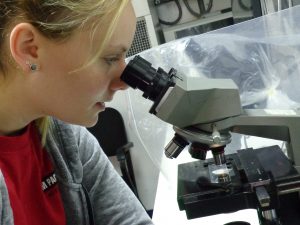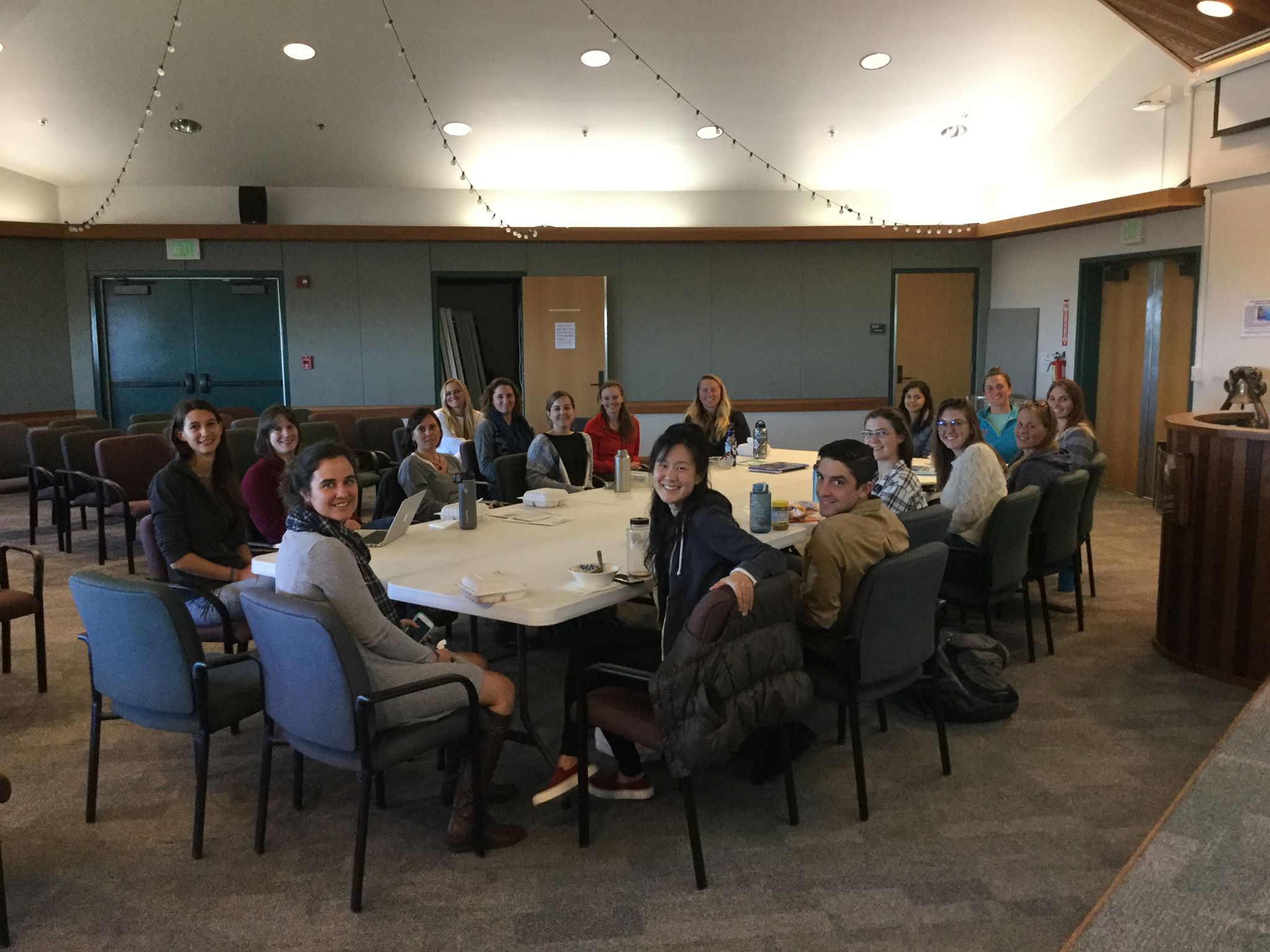By Holly Chiswell, MLML Chemical Oceanography Lab

I went hiking yesterday, and one of my friends made mention of how in Santa Cruz we are in a little bubble. Our access to redwoods and the ocean all in one hike is a natural escape and we are particularly fortunate to live and work where we do. Besides the stress-reducing getaway aspect, I think we are also lucky for the marine science community we are a part of, and Moss Landing Marine Laboratories (MLML) is certainly included within this. However, there is a world outside of this redwood-duff, kelp-canopy bubble, where we all can do more to support the greater marine science community, especially those who wish to start families and maintain their careers.
Last week at MLML, SWMS hosted one of our female tenure-track faculty members, Dr. Gitte McDonald, and her colleague Dr. Stella Hein, a visiting faculty/staff at UC Santa Cruz, for a lunch discussion centered around a recent paper published in Marine Mammal Science titled: “Equity and career-life balance in marine mammal science?” [1]. I found this conversation on career-life balance appreciated and I’d like to share my thoughts and some takeaways from the afternoon.
The two topics that stuck out most to me were community and infrastructure. These seem to be connected and crucial when it comes to building both career and family as a budding scientist.
Last week Nature even published a headline [2] that reads: “Nearly half of US female scientists leave full-time science after first child,” from a paper in PNAS [3] that came out saying that not only are nearly half of new mothers leaving science, but nearly one quarter of fathers are leaving full-time STEM employment after their first child as well (Cech and Blair-Loy, 2019). When it comes to community and a support system, some may be fortunate enough to have a partner that will take care of the child while they are working a long day, but others are not. The need to provide some sort of childcare in a school/lab/conference space is a large shortcoming that was highlighted as a suggestion in the paper. That is not to say that adding this sort of infrastructure will remove all stigmas associated with being a woman and raising children in the STEM field, but it may help decrease the percentage of women that leave full-time STEM positions when they have children. We have the opportunity to speak up and encourage change in the United States.
It was delightful having both of these women with two different perspectives and paths, both thriving, sharing their wisdom. Through them and this paper sharing perspectives on changes we can impart on the future as the next generation of us women graduate students enter into the young scientist positions. I would like to thank Drs. Gitte McDonald and Stella Hein for taking the time to speak with our group and personally spark an interest in vocalizing the need for these changes in the future.


